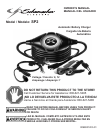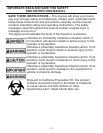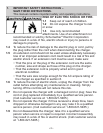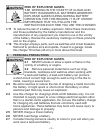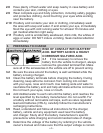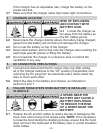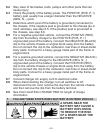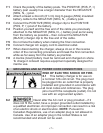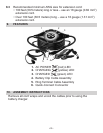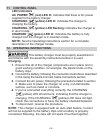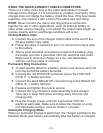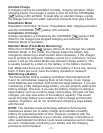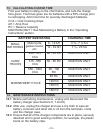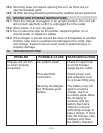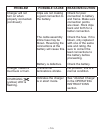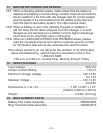
• 5 •
If the charger has an adjustable rate, charge the battery on the
lowest rate rst.
Make sure that the charger cable clips make tight connections.3.7
CHARGER LOCATION4.
RISK OF EXPLOSION
AND CONTACT WITH
BATTERY ACID.
Locate the charger as 4.1
far away from the battery as
the DC cables permit.
Never place the charger directly above the battery being charged; 4.2
gases from the battery will corrode and damage the charger.
Do not set the battery on top of the charger.4.3
Never allow battery acid to drip onto the charger when reading the 4.4
electrolyte specic gravity or lling the battery.
Do not operate the charger in a closed-in area or restrict the 4.5
ventilation in any way.
DC CONNECTION PRECAUTIONS5.
Connect and disconnect the DC output clips only after setting 5.1
all of the charger switches to the “off” position (if applicable) and
removing the AC plug from the electrical outlet. Never allow the
clips to touch each other.
Attach the clips to the battery and chassis, as indicated in 5.2
sections 6 and 7.
FOLLOW THESE STEPS WHEN BATTERY IS INSTALLED 6.
IN VEHICLE
A SPARK NEAR THE
BATTERY MAY CAUSE A
BATTERY EXPLOSION.
TO REDUCE THE RISK
OF A SPARK NEAR THE
BATTERY:
Position the AC and DC cables to reduce the risk of damage by the 6.1
hood, door and moving or hot engine parts. NOTE: If it is necessary
to close the hood during the charging process, ensure that the hood
does not touch the metal part of the battery clips or cut the insulation
of the cables.



